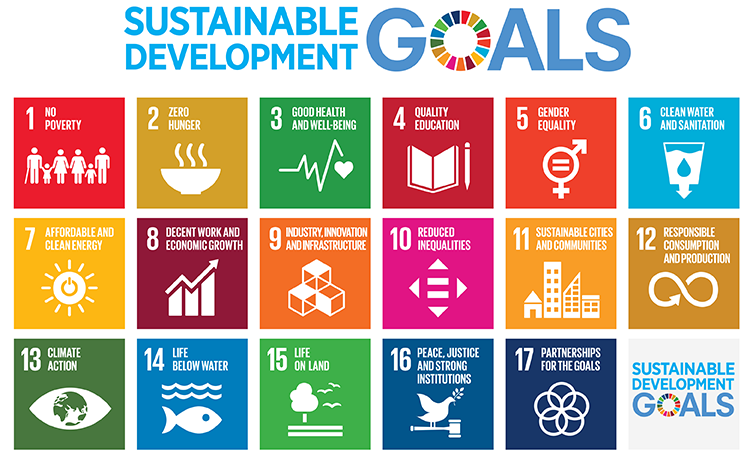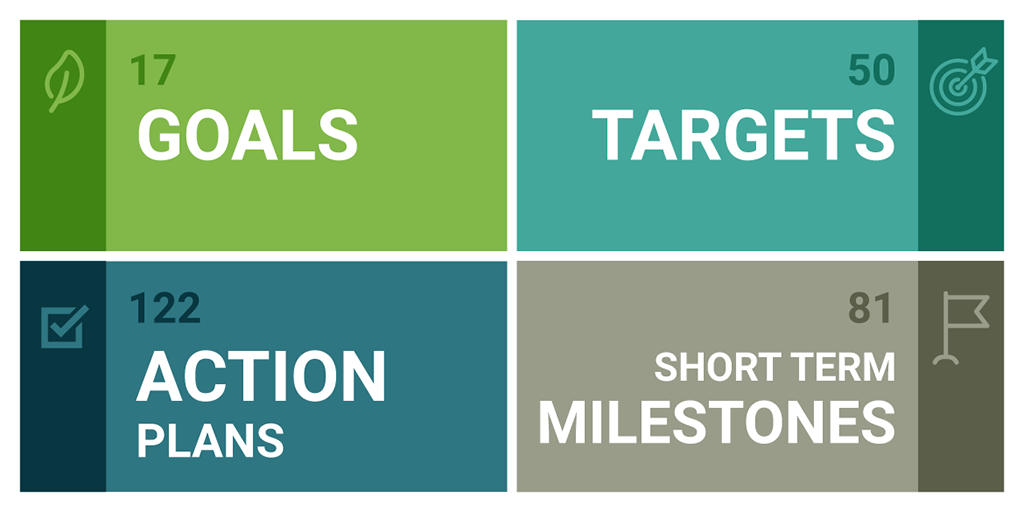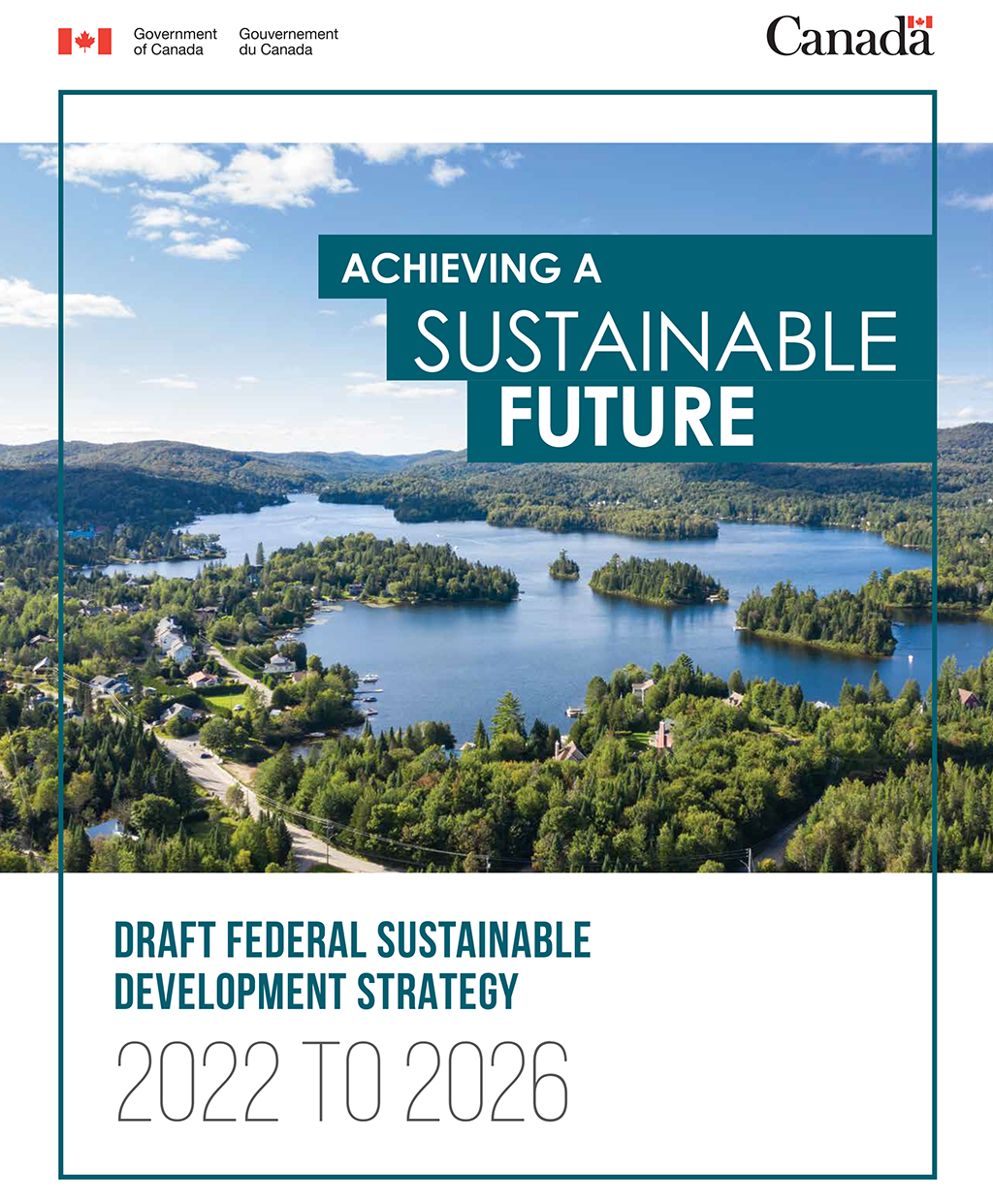Comments on the Draft 2022–2026 Federal Sustainable Development Strategy
Under the Federal Sustainable Development Act, the Minister of the Environment and Climate Change is required to prepare a federal sustainable development strategy at least once every three years since 2010. This year marks the fifth federal sustainable development strategy.
Under the act, the Minister shall submit the draft strategy to the Commissioner of the Environment and Sustainable Development for review and comment, including as to whether each target is measurable and includes a time frame.
The Commissioner of the Environment and Sustainable Development provided his comments to the Minister via letters dated 29 April 2022 and 8 July 2022. Below is a consolidated summary of those letters, which are available in their original form by contacting our office.
Although the draft is the fifth federal sustainable development strategy, it is the first to be developed under the new version of the Federal Sustainable Development Act (the revised act — see Exhibit 1), involving about 100 federal organizations.
Exhibit 1—Changes in the purpose of the Federal Sustainable Development Act
| Federal Sustainable Development Act (2008) | Amendments made to the Federal Sustainable Development Act (2020) |
|---|---|
|
3 The purpose of this act is to provide the legal framework for developing and implementing a Federal Sustainable Development Strategy that will make environmental decision-making more transparent and accountable to Parliament. |
3 The purpose of this act is to provide the legal framework for developing and implementing a Federal Sustainable Development Strategy that makes decision making related to sustainable development more transparent and subject to accountability to Parliament, promotes coordinated action across the Government of Canada to advance sustainable development and respects Canada’s domestic and international obligations relating to sustainable development, with a view to improving the quality of life of Canadians. |

Source: Transforming our world: The 2030 Agenda for Sustainable Development, United Nations
Text version
17 Sustainable Development Goals
1. No poverty
2. Zero hunger
3. Good health and well-being
4. Quality education
5. Gender equality
6. Clean water and sanitation
7. Affordable and clean energy
8. Decent work and economic growth
9. Industry, innovation and infrastructure
10. Reduced inequalities
11. Sustainable cities and communities
12. Responsible consumption and production
13. Climate action
14. Life below water
15. Life on land
16. Peace, justice and strong institutions
17. Partnerships for the goals
“…Progress has been made in the form of moving from addressing 13 goals in the last strategy to 17 goals that reflect the 17 Sustainable Development Goals of the United Nations’ 2030 Agenda for Sustainable Development. The draft strategy remains focused on “environmental decision making” instead of “decision making related to sustainable development.” This is a failure to reflect the importance of the amendments that were made to the act’s purpose section.”

Text version
17 goals
50 targets
122 action plans
81 short term milestones
The Government of Canada is committed to working with all partners to accelerate progress on the 17 Sustainable Development Goals in Canada and contribute to their achievement at the international level.
Results of the Review: Primary issues

Recommendation number 1: We strongly recommend that the draft strategy fully integrate the environmental, economic, and social factors of sustainable development in decision making so that the federal government can effectively deliver on its sustainable development commitments and initiatives.
The draft strategy does not fully integrate the environmental, economic, and social factors of sustainable development
The draft strategy remains focused on “environmental decision making” instead of “decision making related to sustainable development.” This is a failure to reflect the importance of the amendments that were made to the act’s purpose section.
The draft strategy states that it sets out the government’s sustainable development goals, targets, milestones, and implementation strategies from an “environmental perspective.” Even though the chapters of the draft strategy are organized according to the 17 Sustainable Development Goals, the strategy explicitly focuses on just 1 factor. The practical effect of this narrow focus is illustrated well in chapter 1, which relates to Sustainable Development Goal 1, No Poverty. Instead of addressing the main elements of the federal government’s wide-ranging work to eliminate poverty, chapter 1 focuses on supporting Canadians’ preparedness for disaster and emergencies. While such preparedness is clearly important, the “environmental perspective” of the strategy results in the exclusion of most of the many other federal initiatives that address this goal (see Exhibit 2).
Exhibit 2—Chapter 1, Support Canadians’ Preparedness for Natural Disasters and Emergencies, in the draft strategy does not fully reflect the Sustainable Development Goal of no poverty (Goal 1)
| Draft strategy, Chapter 1, Support Canadians’ Preparedness for Natural Disasters and Emergencies | Examples of other federal government initiatives that address the goal of no poverty (Goal 1) that are not covered in the chapter |
|---|---|
|
Aspect covered: Emergency management and disaster risk reduction Target: By March 2023, 55% of Canadians are aware of disaster risks facing their household (Minister of Public Safety, Minister of Emergency Preparedness) Short-term milestone: Publish National Risk Profile reports and issue public reports on the National Risk Profile on a biennial basis. These reports will improve Canadians’ understanding and awareness of disaster risk. Support for the Global Indicator Framework for SDG target 1.5: By 2030, build the resilience of the poor and those in vulnerable situations and strengthen their capacity to respond to and recover from climate-related extreme events and other economic, social and environmental shocks and disasters. |
Employment and Social Development Canada is the lead department for Opportunity for All—Canada’s First Poverty Reduction Strategy, which includes a national target of a “50% reduction in the poverty rate by 2030, relative to 2015 levels” and which is related to SDG target 1.5. The Poverty Reduction Strategy includes also dozens of interrelated strategies, programs, and benefits under 3 pillars that address multiple aspects of Goal 1. The following are some examples: Lifting Canadians out of poverty by ensuring everyone’s basic needs are met
Helping Canadians join the middle class by promoting full participation in society and equality of opportunity
Supporting the middle class by protecting Canadians from falling into poverty and by supporting income security and resilience
Other Goal 1 targets not covered in this chapter 1.1 By 2030, eradicate extreme poverty for all people everywhere, currently measured as people living on less than $1.25 a day. 1.2 By 2030, reduce at least by half the proportion of men, women and children of all ages living in poverty in all its dimensions according to national definitions. 1.3 Implement nationally appropriate social protection systems and measures for all, including floors, and by 2030 achieve substantial coverage of the poor and the vulnerable. 1.4 By 2030, ensure that all men and women, in particular the poor and the vulnerable, have equal rights to economic resources, as well as access to basic services, ownership and control over land and other forms of property, inheritance, natural resources, appropriate new technology and financial services, including microfinance. |
Similar problems arise in many of the other chapters of the draft strategy, where the “environmental focus” has the effect of excluding the key economic and social aspects of the government’s work in implementing the various sustainable development goals.
The amendments to the act also sought to support a whole-of-government approach through a vast expansion of the list of federal entities that are required to prepare supporting sustainable development strategies. In its current form, the draft Strategy remains an "environmental decision-making" strategy. This limited "environmental perspective" of the Strategy poses significant risks to its implementation at the government-wide level:
- it does not provide a meaningful change to sustainable development decision making across the federal government, notably by continuing to disconnect environmental considerations from key decisions made by the central agencies of government
- it increases the risk that the federal government will continue to take a silo‑ed approach to managing environmental issues, independent of other government decisions that relate to the broader notion of sustainable development.
- it risks meaningfully limiting the participation of many of the new organizations that are now subject to the act, thereby excluding many of the broader sustainable development contributions that these organizations could make through their own departmental sustainable development strategies.
The Strategy should fully integrate environmental, economic and social considerations of sustainable development to reflect not only the intent of the amended act, but also to make sustainable development decision-making more effective, inclusive and accountable.
The lack of coherence among federal government frameworks related to sustainable development for Canadians creates confusion.
The Canadian federal government has various frameworks that set out different sustainable development goals, targets or actions. These various frameworks are led by separate federal departments (see Exhibit 3).
Exhibit 3—Examples of federal government frameworks related to sustainable development
| Federal government framework | Stated purpose | Federal leads |
|---|---|---|
|
Federal Sustainable Development Strategy |
Sets out the Government of Canada's sustainable development goals and targets. |
Environment and Climate Change Canada |
|
Gender Results Framework |
Represents the Government of Canada's vision for gender equality and highlights key issues. |
Women and Gender Equality Canada |
|
Canadian Indicator Framework for Sustainable Development Goals |
A series of indicators developed by Statistics Canada in collaboration with the Sustainable Development Goals Unit of Employment and Social Development Canada and other federal departments. |
Statistics Canada, Employment and Social Development Canada |
|
Measuring What Matters: Toward a Quality of Life Strategy for Canada |
Includes five broad domains of quality of life for Canadians: prosperity, health, environment, society, and good governance. |
Finance Canada |
All of these frameworks aim to establish goals or targets for Canadians that are measured by indicators. The persistent problem is the lack of coordination between and within federal organizations. Especially since the introduction in 2021 of the new well-being framework: “Measuring What Matters: Toward a Quality of Life Strategy for Canada”.
This lack of coordination creates confusion among the Canadian public and within these organizations themselves, increasing the probability that necessary actions will not be implemented or that actions that appear to have dual or conflicting objectives will be implemented.
Although the federal government uses many frameworks, the federal sustainable development strategy remains the only one that is legislated. Therefore, the strategy should comprehensively reflect the work of the federal government as a whole and how it contributes to all 3 factors of sustainable development for Canadians. Fully integrating the various frameworks relating to sustainable development into a comprehensive strategy would be a significant first step to mainstreaming and integrating sustainable development decision making all across the federal government as envisioned by the act.
Results of the Review: Specific comments on the content of the draft strategy

- Progress against many targets cannot be tracked.
- Targets are not connected to implementation strategies and short-term milestones.
- Targets carried over from the previous version of the strategy have been downgraded.
- Better alignment with the Federal Sustainable Development Act principles is necessary, including a results and delivery approach to meeting measurable targets.
- The majority of the United Nations Sustainable Development Goals targets are not addressed.
Progress against many targets cannot be tracked
The draft strategy presents 50 targets to achieve 17 sustainable development goals. The Federal Sustainable Development Act requires that each target be measurable and include a time frame.
Measurability of the targets
We observed that 15 out of 50 targets have measurability issues. They lack specificity because they contain multiple conditions and dates, or because they are vague.
Performance Indicator
We observed found that 12 out of 50 targets did not have a relevant performance indicator.
Timeframe
We observed that one of the 50 targets had a date that is already in the past.
Ultimately, taking into account the measurability of the targets, the gaps in the performance indicators, and the target with a timeframe in the past, we conclude that there are 22 targets for which it is not possible to properly track progress as required by the act.
Recommendation number 2: We recommend that the 2022–2026 Federal Sustainable Development Strategy targets be revised so that they are consistently measurable, time-bound and supported by indicators that accurately represent the targets and allow for comparison over time.
Targets are not connected to implementation strategies and short-term milestones
Implementation strategies are meant to set out the actions the Government of Canada will undertake to achieve its goals and targets.
Short-term milestones refer to what is added to the targets to highlight the interim steps that need to be taken to ensure that the Government of Canada stays on track to achieve its goals for the years 2022 to 2026.
The draft contains 13 sustainable development goals with several targets. These goals propose several short-term milestones and implementation strategies in a list.
However, we observed that the items on the list were assembled without an explicit connection to the targets (a total of 37 targets did not have clearly associated implementation strategies and short-term milestones). In this case, not only is one of the requirements of the act not being respected, but there is also no connection between the implementation strategies, the short-term milestones and the targets. This prevents parliamentarians and the Canadian public from accessing certain information related to the government's actions or from being communicated on progress towards the targets.
Recommendation number 3: We recommend that the 2022–2026 Federal Sustainable Development Strategy clearly identify the link between targets, short-term milestones and implementation strategies to enable a better understanding of the government's efforts and to improve the ability to assess progress on the strategy.
Targets carried over from the previous version of the strategy have been downgraded
In comparison to the 32 targets in the 2019–2022 Federal Sustainable Development Strategy, the 50 targets for 2022–2026 include: 27 new targets, and 23 targets from the previous strategy.
We observed that 10 of the 23 targets had been downgraded; meaning that the expectations set for the expected outcomes for the 2022–2026 cycle had been lowered from the established objectives.
We believe that lowering performance expectations or changing the way progress is tracked for previously established targets goes against the act’s principles of transparency and accountability.
Recommendation number 4: We recommend that the targets carried over from the previous strategy into the new 2022–2026 Federal Sustainable Development Strategy exhibit a scope that is at least as ambitious as previously stated, be clear about the nature and the extent of the issues to be addressed, and be clear about the expected results and how progress will be tracked.
Better alignment with the Federal Sustainable Development Act principles is necessary, including a results and delivery approach to meeting measurable targets
The 2019 amendments to the Federal Sustainable Development Act introduced basic principles to be considered in the development of the sustainable development strategy.
The draft version attempts to follow these principles. Yet we noticed that out of 50 targets, 22 were not results-oriented. This is mainly because instead of presenting these targets as outputs or outcomes, they present them as activities, inputs or indicators.
Recommendation number 5: We recommend that the 2022–2026 Federal Sustainable Development Strategy better align with the principles of the Federal Sustainable Development Act, including ensuring that all targets are results-oriented by stating them in terms of short-, medium-, or long-term results to be achieved and not formulating any target as an input, an activity, or an indicator.
The majority of the United Nations Sustainable Development Goals targets are not addressed
It is expected that, to the extent possible, the draft Federal Sustainable Development Strategy will have targets that are clearly connected to the United Nations Sustainable Development Goals from an environmental lens.
After evaluating the draft strategy, we observed that only 43 of the 169 United Nations 2030 Agenda targets are covered by the draft sustainable development strategy.
The fact that the draft focuses primarily on environmental aspects obscures the government's important efforts related to the social and economic aspects of sustainable development.
Recommendation number 6: We recommend that the Federal Development Strategy 2022–2026 better integrate all the United Nations Sustainable Development Goals targets that are relevant to Canada.
Conclusion
Overall, we observed that if the draft strategy retains its “environmental decision-making” focus, then Canadians will have an inferior federal sustainable development strategy that will not result in the important expected improvements to their quality of life.
Many of the targets in the draft strategy are also not measurable, and that, together with performance indicator gaps we observed, the draft strategy as it stands impedes to a large extent the government's ability to report on progress and demonstrate accountability.
The targets are also not connected to short-term milestones and implementation strategies as they should be. In addition, about half of the targets within the strategy are not results-oriented and many targets carried over from the previous strategy were downgraded.
Lastly, this strategy is not well aligned with the targets associated with the social and economic aspects of the United Nations Sustainable Development Goals.